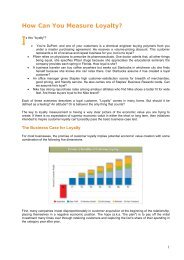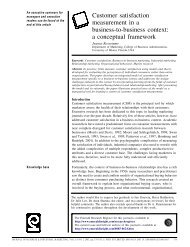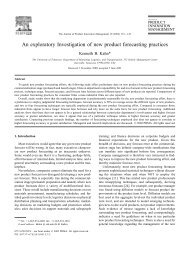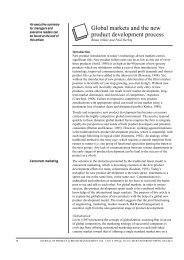The Executive's Guide to Branding
The Executive's Guide to Branding
The Executive's Guide to Branding
Create successful ePaper yourself
Turn your PDF publications into a flip-book with our unique Google optimized e-Paper software.
<strong>to</strong> enjoy sustainable competitive advantages—and therefore superior<br />
financial performance.<br />
8. Do strong brands lower cus<strong>to</strong>mer churn?<br />
<strong>The</strong> cus<strong>to</strong>mer churn rate (or its inverse the cus<strong>to</strong>mer retention rate) is an<br />
important metric used in marketing. It is estimated that the cost of acquiring<br />
cus<strong>to</strong>mers is at least five times greater than that of cus<strong>to</strong>mer retention. It<br />
doesn’t take a rocket scientist <strong>to</strong> figure out that selling <strong>to</strong> a stable cus<strong>to</strong>mer<br />
base (low churn) is more profitable than selling <strong>to</strong> a cus<strong>to</strong>mer base with a<br />
high-turnover rate (high churn). Does strong branding help reduce cus<strong>to</strong>mer<br />
churn? Cus<strong>to</strong>mer loyalty is a function of switching costs, differentiation, and<br />
brand preference. <strong>Branding</strong> takes the core benefits of a product and extends<br />
them in<strong>to</strong> a source of greater value through the accretion of intangible<br />
benefits (like lower perceived risk and added emotional benefits). By adding<br />
these additional benefits the brand earns a higher degree of differentiation.<br />
And relevantly differentiated brands lead <strong>to</strong> lower cus<strong>to</strong>mer churn.<br />
Zyman Institute of Brand Science – Perspectives 5













